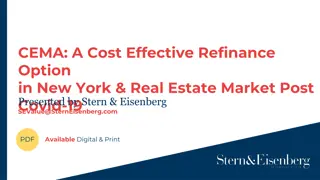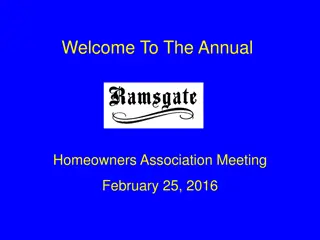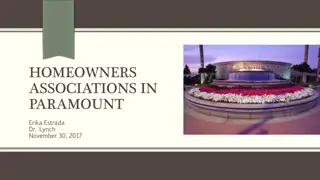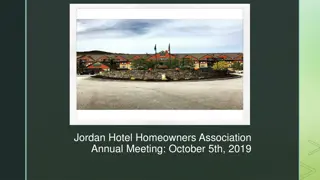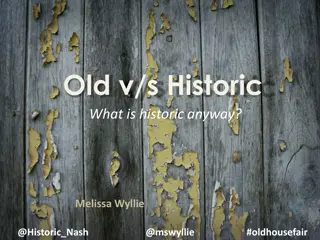Historic Designation Implications on Homeowners: Concerns and Questions
Historic designation can bring both prestige and potential challenges for homeowners, from navigating local regulations to dealing with objections. Understanding the implications and potential burdens is key for making informed decisions. This content explores various aspects related to historic designation and its impact on residential neighborhoods.
Download Presentation

Please find below an Image/Link to download the presentation.
The content on the website is provided AS IS for your information and personal use only. It may not be sold, licensed, or shared on other websites without obtaining consent from the author.If you encounter any issues during the download, it is possible that the publisher has removed the file from their server.
You are allowed to download the files provided on this website for personal or commercial use, subject to the condition that they are used lawfully. All files are the property of their respective owners.
The content on the website is provided AS IS for your information and personal use only. It may not be sold, licensed, or shared on other websites without obtaining consent from the author.
E N D
Presentation Transcript
Verifying whether quality is excellent. Criterion C Heart of Bankers Hill Historic District is eligible for listing in the National Register of Historic Places at the local level of significance under Criterion C in the area of Architecture as an excellent, intact concentration of early twentieth century residential architectural styles. San Diego s Historical Resource Board has instructed the nominator to change wording to good to excellent throughout. Is good quality sufficient to merit national registration? For cities like the City of San Mateo (and other small cities) who do not have a resource board, nor staff to review the nominations, how does SHRC propose to make sure claims of excellent distinction are accurate? Could the OHP verify such claims?
3329 Brant Street 1912 https://www.google.com/url?q=https://www.google.com/maps/@32.7401779,- 117.1667599,3a,75y,90.47h,89.53t/data%3D!3m7!1e1!3m5!1s9AJprDMenUXIaNA1xzf-Ng!2e0!6shttps:%252F%252Fstreetviewpixels- pa.googleapis.com%252Fv1%252Fthumbnail%253Fpanoid%253D9AJprDMenUXIaNA1xzf- Ng%2526cb_client%253Dmaps_sv.share%2526w%253D900%2526h%253D600%2526yaw%253D90.47116788882815%2526pitch%253D 0.4667018173511508%2526thumbfov%253D90!7i16384!8i8192!5m1!1e1?coh%3D205410%26entry%3Dttu&sa=D&source=editors&ust=17 22377157228079&usg=AOvVaw01OL4v2cbTAkZ6ntO0hxJO
19 3544 Albatross Street Contributor 1927
Residential Neighborhoods and CEQA Preservationists claim that State and/or National Registration does not impose any new restrictions upon homeowners, except those set by local authorities. We believe this is not true and why our group is concerned about a potential designation. In California, historic designation triggers CEQA. CEQA requires that homeowners adhere to the Department of Interior standards with respect to exterior remodels. Even when local government approves a project, CEQA opens the door for neighbors to sue each other and Cities, in many cases tieing up homeowners projects for years, in a way that CEQA was never intended. In effect, by approving residential nominations, SHRC is laying the ground for potential bitter fights among homeowners. If we have this wrong, could SHPO issue clear language that national recognition imposes no further burdens except those imposed by the local governments?
Objection Process Professionals do not agree on the added burdens of designation, how could a homeowner make an informed decision whether to object? In the informational letters that go out to homeowners, can the OHP provide an explanation of the added burdens of the designation? Something like: All future external projects will require conformance with CEQA, Department of Interior standards that limit changes to the exterior of your property. For example custom windows may be needed, when upgrading.
The objection process does not exempt from CEQA 51% is a difficult standard to achieve, and even if met, does not excuse homeowners from the burdens of CEQA, as eligibility is determined irrespective of those objections. Under CEQA, there s no substantive difference between designating a historic district and designating a district eligible to be historic --so we ask for stronger standards for both Could the OHP defer any action regarding eligibility, if in fact a 51% objection level is achieved?
As part of the agenda process, I request the OHP include a report on the how many owners respond to notification letters? Quantity of both objection and support letters? Please provide that information for the current Bankers Hill nomination?
In Summary: 1) What makes a home/neighborhood an excellent example and worthy of recognition? Who verifies? The decision should not be made by any hired expert with a financial incentive. 2) Can SHRC provide greater disclosure to homeowners regarding the need for following CEQA guidelines? 3) Could SHRC defer decisions about eligibility, should 51% of homeowners object? 4) Can SHRC make it a practice to disclose in writing the number of responses, both for and against a nomination?
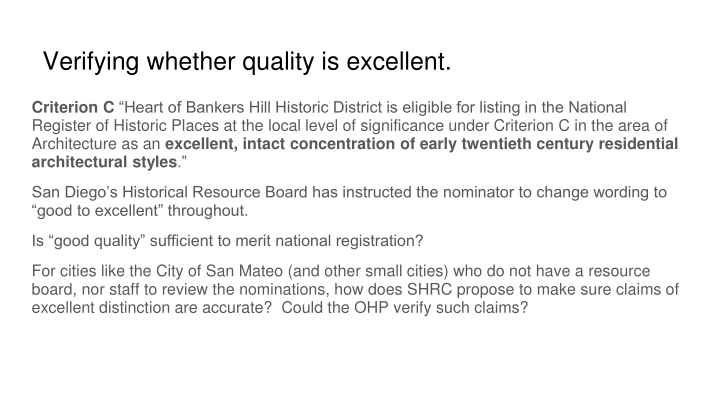


![❤[PDF]⚡ Apollo Mission Control: The Making of a National Historic Landmark (Spr](/thumb/21551/pdf-apollo-mission-control-the-making-of-a-national-historic-landmark-spr.jpg)

